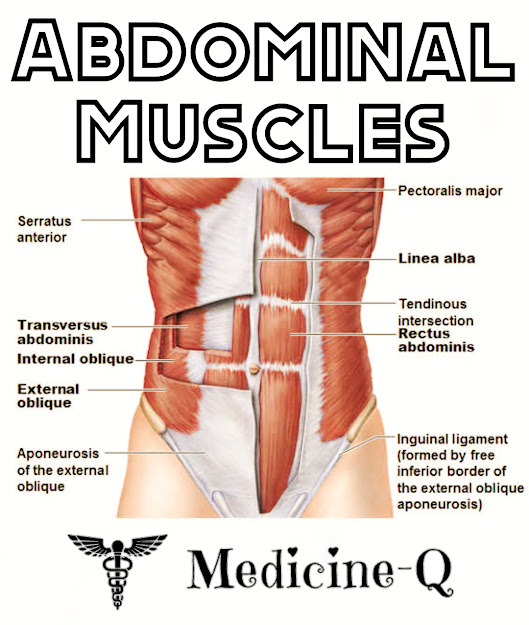Human Anatomy: The Abdomen | By Acland's
The abdomen (commonly called the belly) is the body space between the thorax (chest) and pelvis. The diaphragm forms the upper surface of the abdomen. At the level of the pelvic bones, the abdomen ends and the pelvis begins.
The abdomen contains all the digestive organs, including the stomach, small and large intestines, pancreas, liver, and gallbladder. These organs are held together loosely by connecting tissues (mesentery) that allow them to expand and to slide against each other. The abdomen also contains the kidneys and spleen.
Many important blood vessels travel through the abdomen, including the aorta, inferior vena cava, and dozens of their smaller branches. In the front, the abdomen is protected by a thin, tough layer of tissue called fascia. In front of the fascia are the abdominal muscles and skin. In the rear of the abdomen are the back muscles and spine.
Abdomen Conditions
2- Acute abdomen: A medical phrase doctors use to suggest that peritonitis or some other emergency is present and surgery is likely needed.
3- Appendicitis: Inflammation of the appendix, in the lower right colon. Usually, an inflamed appendix must be removed by surgery.
4- Cholecystitis: Inflammation of the gallbladder, causing severe right-sided abdominal pain. A gallstone blocking the duct exiting the gallbladder is usually responsible.
5- Dyspepsia: The feeling of an upset stomach or indigestion. Dyspepsia can result from benign or more serious conditions.
6- Constipation: Having fewer than three bowel movements per week. Diet and exercise may help but many people will need to see their health care providers.
7- Gastritis: Inflammation of the stomach, often causing nausea and / or pain. Gastritis can be caused by alcohol, NSAIDs, H. pylori infection, or other factors.
8- Peptic ulcer disease: Ulcers are erosions and peptic refers to acid. Peptic ulcers are ulcers in the stomach and duodenum (the first part of the small intestine). The usual cause is either an infection with H. pylori or taking anti-inflammatory medications like ibuprofen.
9- Intestinal obstruction: A single area of the small or large intestine can become blocked or the entire intestine may stop working. Vomiting and abdominal distension are symptoms.
10- Gastroparesis: The stomach empties slowly due to nerve damage from diabetes or other conditions. Nausea and vomiting are symptoms.
11- Pancreatitis: Inflammation of the pancreas. Alcohol and gallstones are the most common causes of pancreatitis. Other causes include drugs and trauma; about 10% to 15% of cases are from unknown causes.
12- Hepatitis: Inflammation of the liver, usually due to viral infection. Drugs, alcohol, or immune system problems can also cause hepatitis.
13- Cirrhosis: Scarring of the liver caused by chronic inflammation. Heavy drinking or chronic hepatitis are the most common causes.
14- Ascites: Abdominal fluid buildup often caused by cirrhosis. Ascites may cause the abdomen to protrude impressively.
15- Abdominal hernia: A weakening or gap in the abdominal fascia allows a section of the intestine to protrude.
16- Abdominal distension: Swelling of the abdomen, usually due to an increased amount of intestinal gas.
17- Abdominal aortic aneurysm: A weakening of the aorta's wall creates a balloon-like expansion of the vessel that grows over years. If abdominal aortic aneurysms grow large enough, they may burst.







0 Comments